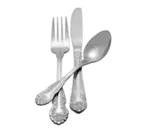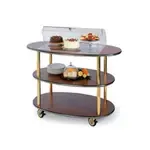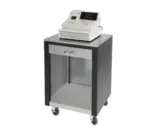.webp)
Ticket Timers - The Clock is Ticking!
Ticket times are the bane of many chef’s existences, pressuring cooks and waitstaff alike to get quality meals out in a timely manner. While a strict ticket time may be required by corporate or general management, the fact of the matter is that there are many factors that can influence its enforcement, and many more factors influencing its reality. Ticket times are designed to create a fast, efficient turnaround for guests. The clock is ticking, so analyze the influences that can make a difference in shortening your ticket times!
The way you design and set up your menu can impact ticket times, and when you make a menu that is lengthy or confusing, the impact can be for the worse. There are some main points to consider when designing an appropriate menu:
Length: Indeed, an overloaded menu means that customers are spending more time at their table trying to decipher the options and choose what’s right for them. They lack a sense of your specialties when you offer ‘everything under the sun’, and the result is that guests spend more times at tables that could have been filled when short, precise menus make for quick orders.
Requirements: Sure, you might pride yourself on a diverse menu, but this brings with it a host of problems that could back up a kitchen, clog up a station, or overwhelm your employees. When employees are tasked with creating a wide variety of dishes, there are fewer hands to perform multiples of the same tasks (such as if you offered a limited menu that increases the likelihood of customers ordering the same items). Also, you may need to invest in more equipment to handle the dishes you plan to offer. All of this costs money and time!
The clear solution to decreasing ticket times would be to start with making a menu that supports a smooth, efficient work environment that is conducive to quick turnaround times for guests and their meals. Focus on a short selection of your restaurant specialties, and graph out in your kitchen what equipment will need to be used and for what dishes. Balance menu items between different pieces of equipment to ensure that you aren’t funneling all of the menu items onto one piece of equipment, creating a traffic jam in the kitchen.
Acceptable ticket times may vary between restaurants and franchises, and you can expect fine dining to have longer wait times than fast casual. Here’s an idea of what are widely regarded and agreed upon as ‘acceptable’:
Greeting: Hostess greets and seats customers immediately, and a waitstaff attends to these guests within two minutes.
Drinks: If the waitstaff cannot take a drink order immediately, then it should be obtained within a minute after seating/greeting.
Appetizers: Within the next 6 minutes, appetizers should be served. This allows for 5 minutes of kitchen prep and 1 minute of serving.
Entree: Lunch target should be 8-12 minutes for most casual concepts. Dinner should be 12-15 minutes. Again, the more formal the concept the longer ticket times for dinner.
Desserts: These are similar to appetizers but slightly quicker - between 3 to 4 minutes.
All restaurants are not created equal, and this goes for ticket times as well! Formulate your schedule loosely on these parameters for an organized guest experience.
DAMON SHRAUNER
Sales Consultant
E Friedman Associates Inc
T: 516-882-1955
D: 712-389-6805
F: 605-782-9015
damon@ckitchen.com


